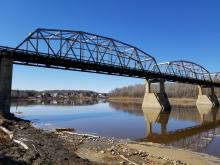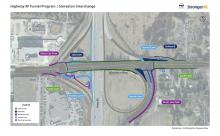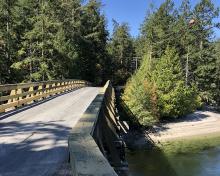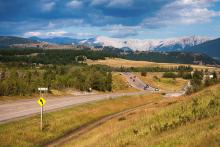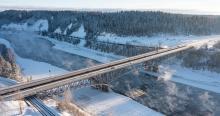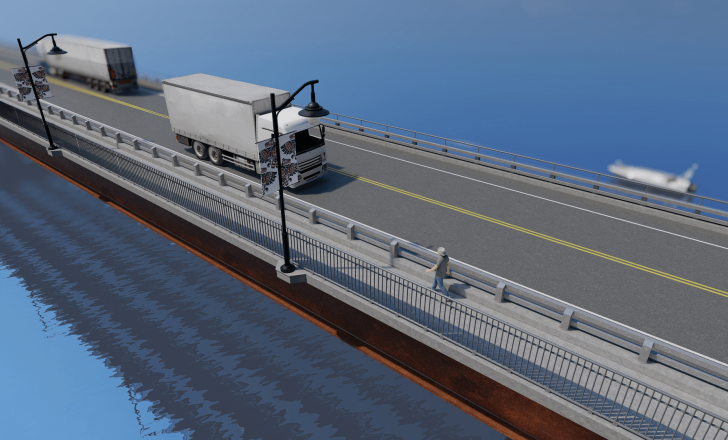
The Yukon government’s Nisutlin Bay Bridge replacement project has been awarded to Vancouver-based Graham Infrastructure for US$124 million (CAN$160 million), with work starting this summer.
The new Nisutlin Bay Bridge will be the largest capital project in Yukon history and is a major transportation route for the territory, the nation and the continent. The bridge is a critical link along the Alaska Highway and was opened in 1956.
The new bridge will be safer for drivers and pedestrians and will accommodate increased traffic volumes, according to the Yukon department of highways. It will also handle larger commercial vehicles carrying goods to the Yukon and the US state of Alaska, directly to the west.
The new two-lane bridge will be 48m long and 13.4m wide to accommodate heavier truck traffic. The bridge deck will be concrete overlaid with asphalt and have a wide shoulder for cyclists and an LED lit sidewalk for pedestrians. A walkway will also be built underneath the bridge so snowmobiles and pedestrians can cross safely.
Completion is expected in 2026.
Most of the Yukon, which borders the Arctic Ocean, has a subarctic climate, characterised by long, cold winters and brief, warm summers. At 482,443 km2, in area, the Yukon is twice the size of the UK and slightly smaller than France, yet has a population of only around 41,000. Major highways include the Alaska Highway, the Klondike Highway and the Dempster Highway – not paved - which links the town of Inuvik in the neighbouring Northwest Territories to the Klondike Highway and is the only road access to the Arctic Ocean in Canada.
The existing 584m-long Nisutlin Bay Bridge crosses Teslin Lake at the narrowest point of the bay. It seven Warren through-truss spans, joined in a rhythmic design, according to Alaska Highway Heritage. It is the longest bridge on the Alaska Highway and the third bridge to span this location at the edge of the town of Teslin since the highway was built during the Second World War to deliver supplies from the US through the province of Alberta into the Yukon and onwards to Alaska.

